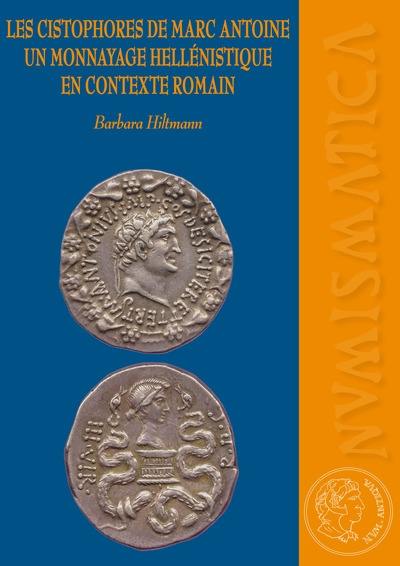
Collection(s) : Numismatica Antiqua
Paru le 12/04/2023 | Broché 238 pages
Public motivé
Exceptionnels à de nombreux égards, les cistophores de Marc Antoine se situent à la croisée des mondes hellénistique et romain : il s'agit de dénominations qui ont été introduites par les Attalides en Asie Mineure durant la première moitié du IIe siècle a.C. et dont les Romains ont maintenu la production lorsque le territoire est passé sous leur contrôle en 133 a.C. Peu à peu, des changements mineurs sont introduits dans la typologie des monnaies. Cependant, ce n'est qu'à partir des frappes antoniennes, vers 39 a.C., que des modifications significatives sont observées. Le portrait du triumuir y apparaît au droit avec, pour la première fois sur un monnayage d'argent dont la frappe a été ordonnée par un Romain, le portrait réaliste d'une femme, son épouse Octavie. La présence de cette dernière s'inscrit dans la propagande véhiculée par les cistophores, dont les types accordent également une grande place à Dionysos, divinité à laquelle Marc Antoine était comparé. Un tel parallèle s'explique, non pas par son prétendu penchant pour la boisson, mais bien plutôt par sa volonté d'exalter ses campagnes victorieuses et, surtout, de vanter celle tant espérée contre les Parthes, menaçant les frontières dès provinces orientales.
La présente étude historique et numismatique rassemble pour la première fois un catalogue représentatif des deux types de cistophores frappés par Marc Antoine (RPC I, 2201-2202). Plus de 800 exemplaires y sont minutieusement analysés et classés selon les liaisons de coins, ce qui permet à l'auteur d'appliquer des méthodes statistiques en vue d'appréhender le volume original des émissions. Grâce aux résultats obtenus, les cistophores antoniens peuvent être replacés dans le contexte politique, militaire et socio-économique de la province d'Asie dans les dernières années de la République romaine.
L'ying at the crossroads of the Hellenistic and Roman worlds, the cistophori of Mark Antony are exceptional in many respects : they are denominations first introduced by the Attalids in the first half of the 2nd century BC, and whose production was continued by the Romans when the territory came under their control in 133 BC. Minor modifications were gradually introduced in the typology of the coins. However, it was only with Mark Antony's issues, around 39 BC, that significant changes can he observed. The general is depicted on the obverse of the coins, accompanied by his wife Octavia, in what is the first realistic portrait of a woman on silver coinage minted under Roman authority. Her presence is consistent with the propaganda conveyed by the cistophori, with some types also displaying Dionysus, the deity to whom Mark Antony was likened. Suck a parallel is not explained by the general's alleged penchant for drink, but rather by the desire to exalt his past victorious campaigns and, above all, to boast of the muck hoped-for one against the Parthians who threatened the borders of the provinces.
The present historical and numismatic study brings together for the first time a representative catalogue of the two types of cistophori struck by Mark Antony (RPC I, 2201-2202). More than 800 specimens are carefully analyzed and classified by die links, allowing the author to apply statistical methods to understand the original volume of the issues. Thanks to the results obtained, the Antonian cistophori can be situated in the political, military and socio-economic context of the Asian province during the final years of the Roman Republic.
Titulaire d'un diplôme de Master en Sciences de l'Antiquité à l'Université de Lausanne, Barbara Hiltmann est conservatrice des monnaies grecques et romaines au Musée cantonal d'archéologie et d'histoire (Lausanne). Elle intervient également dans le cadre de l'enseignement de la numismatique antique à l'Université de Lausanne.